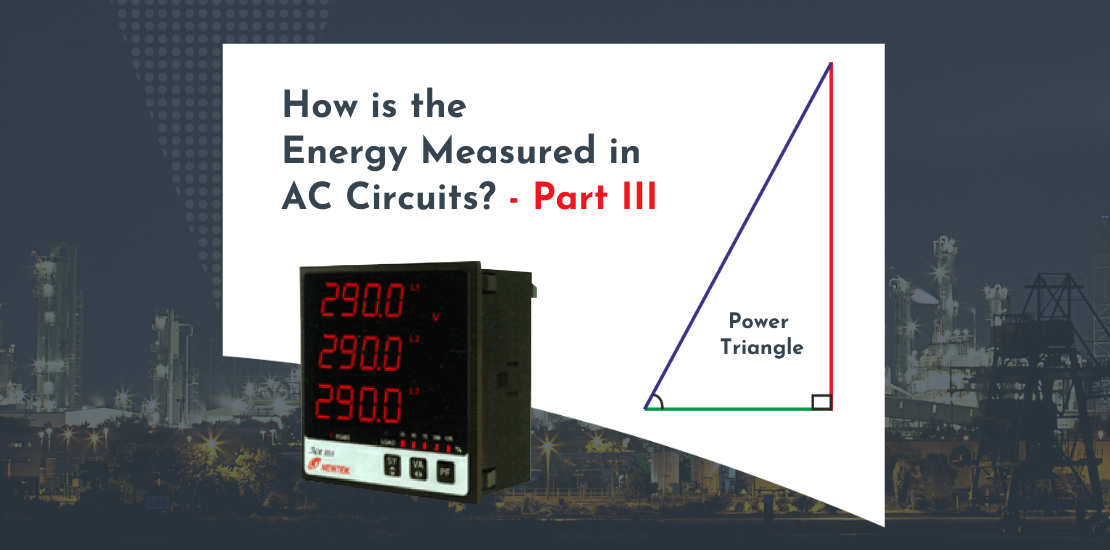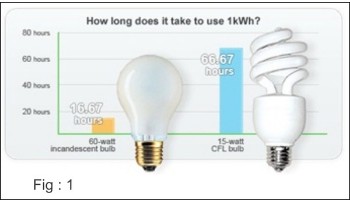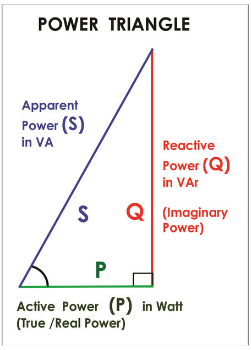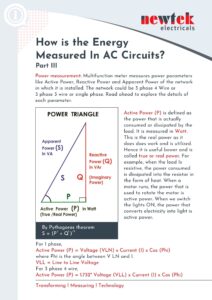- July 9, 2021
- Posted by: Dyaneshwar Nirmale
- Category: Digital Meters

Power measurement: Multifunction meter measures power parameters like Active Power, Reactive Power and Apparent Power of the network in which it is installed. The network could be 3 phase 4 Wire or 3 phase 3 wire or single phase. Read ahead to explore the details of each parameter.

In the Fig 1, there are two lamps, one of 60W and another of 15W
The lamp of 6OW (0.06kW) load will take 16.67 hours to complete one unit (1 kWhr) E = 0.06 kW x 16.67 hr = 1 kWhr
The lamp of 15 W (0.015kW) load will take 66.67 hours to complete one unit (1 kWhr) E = 0.015 kW x 66.67 hr = 1 kWhr
From the above equations, it can be seen that 60W bulb requires 16.6 hours to consume 1 unit of electricity whereas 15 W bulb takes 66.67 hours for the same.
Therefore, the time required for consuming 1 unit of Electricity is lower when Power of the load is higher and vice-versa.
Conclusion Why measuring the energy matters
Energy measurement is a key requirement in calculating the cost of electricity consumed by homes, offices and industrial plants. Efficient energy measurement provides data that can aid in developing strategies to reduce energy consumption and cut losses.


Active Power (P) is defined as the power that is actually consumed or dissipated by the load. It is measured in Watt. This is the real power as it does does work and is utilized. Hence it is useful bower and is called true or real power. For example, when the load Is resistive, the power consumed is dissipated into the resistor in the form of heat. When a motor runs, the power that is used to rotate the motor is active power. When we switch the lights ON, the power that converts electricity into light is active power.
For 1 phase,
Active Power (P) = Voltage (VLN) x Current (I) x Cos (Phi)
where Phi is the angle between V LN and I.
VLL = Line to Line Voltage
For 3 phase 4 wire,
Active Power (P) = 1.732* Voltage (VLL) x Current (I) x Cos (Phi)
Reactive Power is defined as the power that is neither consumed nor dissipated but is taken from the grid and given back to the grid repeatedly. This power keeps moving back and forth between grid and load and not used for any useful work. Reactive power is measured in VAr (Volt-Amp-reactive).
It is stored in and discharged by capacitive or inductive load. Due to its lack of usefullness, it is also called Imaginary Power. It exists due to presence of reactive load (capacitive or inductive load). More the reactive load, more the reactive power.
For 1 phase,
Reactive Power (Q) = Voltage (VLN) x Current (I) x Sin (Phi) For
3 phase 4 wire,
Reactive Power (Q) = 1.732 * Voltage (VLL) x Current (I) x Sin (Phi)
Apparent Power is measured in volt-amperes (VA) and is the voltage of an AC system multiplied by all the current that flows in it. Apparent Power is the total power of the system. It is the vector sum of the active and the reactive power.
For 1 phase, Apparent power (S) = Voltage (VLN) x Current (I)
For 3 phase 4 wire,
Apparent power (S) = 1.732 x Voltage (VLL) x Current (I)
Power Triangle: The relation between Apparent Power (S), Active Power (P) and Reactive Power (Q) can be best explained using “Power Triangle” shown in adjoining figure. As these parameters form a right angle triangle, there exists Pythagorean relationship between them. Apparent Power is the hypotenuse, hence S = square root of (P2+Q2).
Conclusion
As the above equation illustrates, apparent power has to supply not only the active power component but the reactive power component as well which is actually not contributing to useful work. Higher the reactive component, more is the apparent power wasted. Thus, it is clear that reactive power reduces the efficiency of the system and hence is undesirable.

